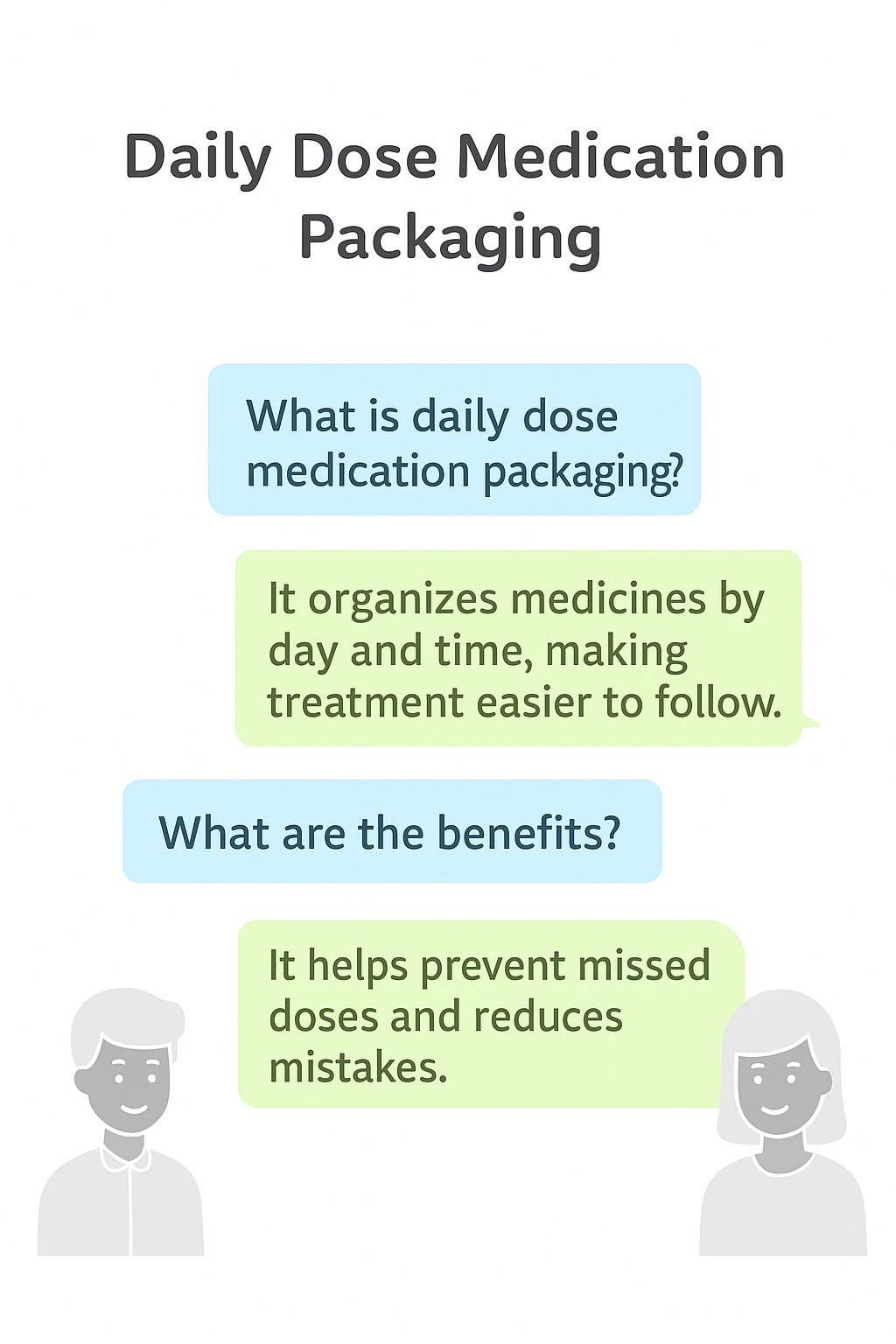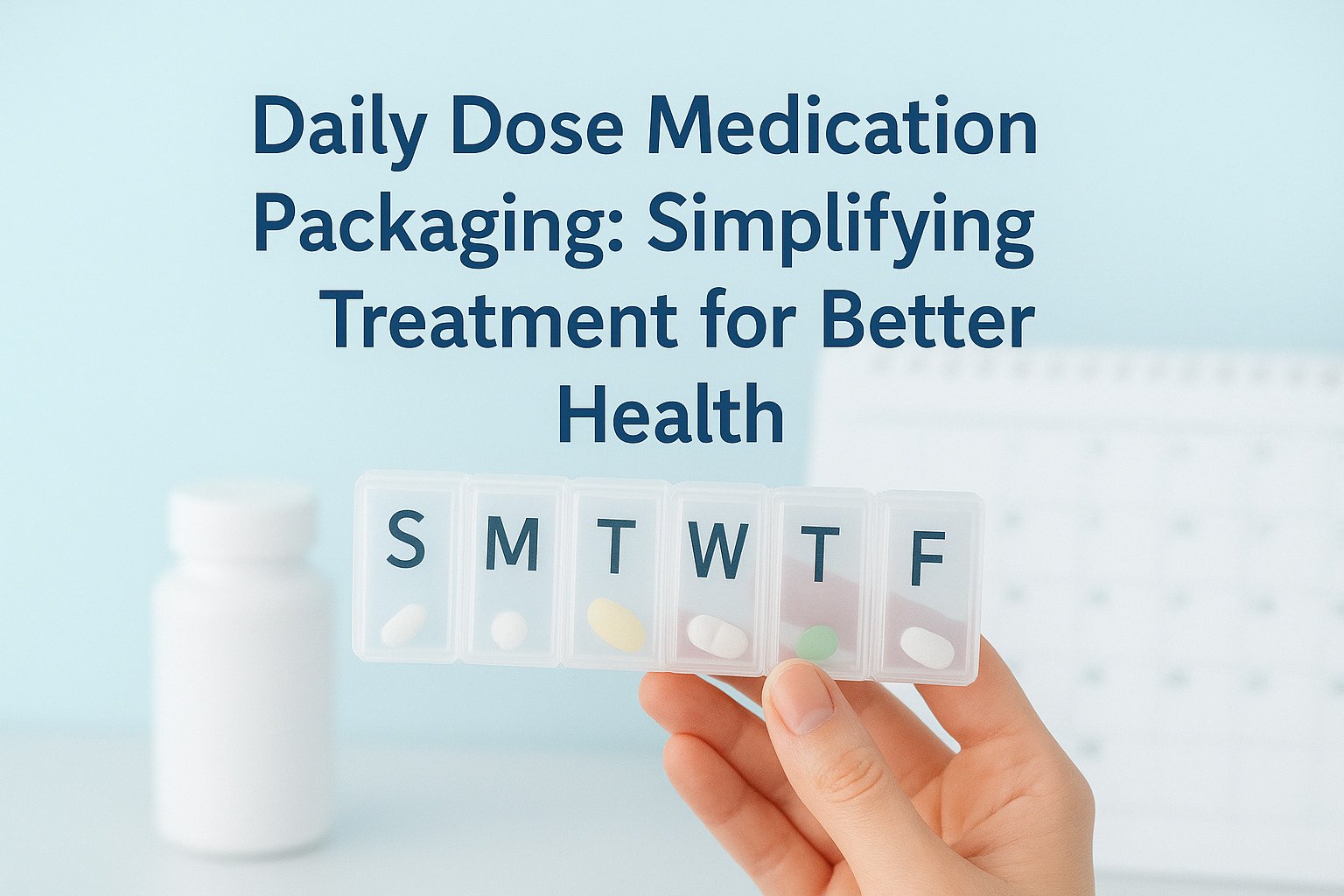Introduction to Daily Dose Medication Packaging
Daily dose medication packaging organizes your medicines by day and time, making treatment easier to follow. It helps prevent missed doses and reduces mistakes.
This simple approach improves how well you stick to your medication routine, which can lead to better health outcomes. In this article, I’ll explain how daily dose packaging works and why it matters—especially for complex treatments like Pegasys.
What Is Daily Dose Medication Packaging?


Definition and Basic Concept
Daily dose medication packaging means sorting medicines into doses for specific days and times. Instead of keeping all pills in one bottle, each dose is pre-arranged and labeled.
This helps patients take the right medicine at the right time without guesswork. It’s especially useful for people managing multiple medications or complex schedules. The goal is simple: make it easier to follow treatment plans and avoid missed or extra doses.
Common Types of Packaging
The main types include blister packs, pill organizers, and pouch systems. Blister packs hold pills in sealed bubbles, often labeled by day or time.
Pill organizers are plastic boxes divided into compartments for each dose.
Pouch systems are small sealed bags containing one dose per pouch, often prepared by pharmacies. Each type aims to improve convenience and safety.
The choice depends on the patient’s needs, medication type, and healthcare provider preferences.
Why Daily Dose Packaging Matters for Patients
Improving Medication Adherence
Daily dose packaging helps patients take their medicines on time and in the right amounts. When pills are organized by day and time, it’s easier to follow the schedule.
This reduces missed doses and keeps treatment on track. For people with multiple medications, the clear layout removes guesswork and confusion.
Staying consistent with medication improves health outcomes and avoids complications.
Reducing Medication Errors
Packaging lowers the chance of taking the wrong medicine or the wrong dose. When pills are pre-sorted and labeled, patients don’t have to rely on memory or confusing instructions.
This is especially important for older adults or those with vision challenges. Clear packaging reduces mistakes and prevents harmful mix-ups.
It creates a safer medication routine and peace of mind for both patients and caregivers.
Pegasys Medication Package Insert: What You Need to Know
Overview of Pegasys and Its Packaging Instructions
The Pegasys medication package insert provides clear guidelines on how to use the medicine safely. It explains dosage, timing, storage, and possible side effects.
This insert helps patients understand their treatment and follow it properly. Knowing these instructions reduces confusion and supports better health management.
How Packaging Supports Safe Use of Pegasys
Proper packaging helps patients handle Pegasys safely and correctly. By organizing doses clearly, packaging prevents missed or incorrect injections.
It also protects the medicine from damage or contamination. This careful setup makes it easier for patients to stick to their Pegasys treatment, lowering risks and improving results.
Benefits of Daily Dose Packaging for Caregivers and Healthcare Providers
Easier Medication Management
Daily dose packaging makes managing medicines simpler for caregivers and healthcare workers.
Pills are sorted by dose and time, so there’s no need to count or sort daily. This clear system reduces mistakes, especially for patients with complex treatments.
It also improves communication between healthcare teams, ensuring everyone follows the same plan.
Caregivers feel less stressed and more confident delivering the right medication.
Saves Time
Packaging cuts down time spent preparing medicines each day. Caregivers can prepare doses in advance, freeing up time for other tasks.
Less sorting means less chance of error. This helps in busy care settings where time is limited.
Reduces Risks
Clear packaging lowers the risk of medication mistakes. Labels and separated doses prevent giving the wrong drug or dose.
This is crucial in hospitals and care homes with many patients. It protects patients and supports safer medication routines.
Challenges and Considerations in Daily Dose Packaging
Cost and Accessibility
Daily dose packaging can add extra cost for patients and providers. Pharmacies may charge more for pre-sorted packs compared to standard bottles.
Not everyone has easy access to pharmacies that offer these services. This limits availability, especially in rural or low-income areas. Insurance coverage varies, so some patients pay out of pocket.
These factors can make daily dose packaging less practical for some people, despite its benefits.
Packaging Limitations
Not all medications or patients are suited for daily dose packaging. Liquid medicines, injections, or creams usually can’t be pre-packaged this way. Some drugs require refrigeration, making standard packaging unsuitable.
Patients with very complex or changing prescriptions might need frequent adjustments that pre-packaging can’t easily accommodate. Additionally, people with cognitive impairments may still need supervision, even with organized packs.
So, daily dose packaging isn’t a one-size-fits-all solution and should be matched carefully to patient needs.
Trends in Medication Packaging
Digital Reminders and Smart Packaging
Technology is starting to improve how patients manage medications. Smart pillboxes with alarms and sensors remind patients to take their meds on time. Some packaging connects to apps that track doses and send alerts to caregivers.
This digital help can boost adherence beyond traditional packaging. It adds a layer of support for people who struggle with memory or complex regimens.
Eco-Friendly Packaging Options
There is growing interest in sustainable medication packaging. Single-use plastics in blister packs raise environmental concerns.
Manufacturers and pharmacies are exploring recyclable materials and reusable containers. Some companies are developing biodegradable pouches or using less plastic overall.
Patients and providers are becoming more aware of packaging’s environmental impact. The shift toward greener options aims to reduce waste without sacrificing safety or convenience.
Final Thoughts on Daily Dose Medication Packaging
Daily dose medication packaging plays a clear role in simplifying medication routines.
By sorting medicines into easy-to-follow doses, it helps patients stay on track and reduces confusion. This improves health outcomes and cuts down on medication errors.
Caregivers and healthcare providers gain from less guesswork and saved time. The system creates safer, more reliable medication management.
However, it’s important to consider costs, availability, and specific patient needs before choosing this packaging.
New trends like digital reminders and eco-friendly materials show the field is evolving. These changes promise to make medication management even simpler and more responsible.
In the end, daily dose packaging isn’t perfect for everyone, but for many, it makes treatment easier to handle. It supports better health by helping patients take medicines correctly, every day.











